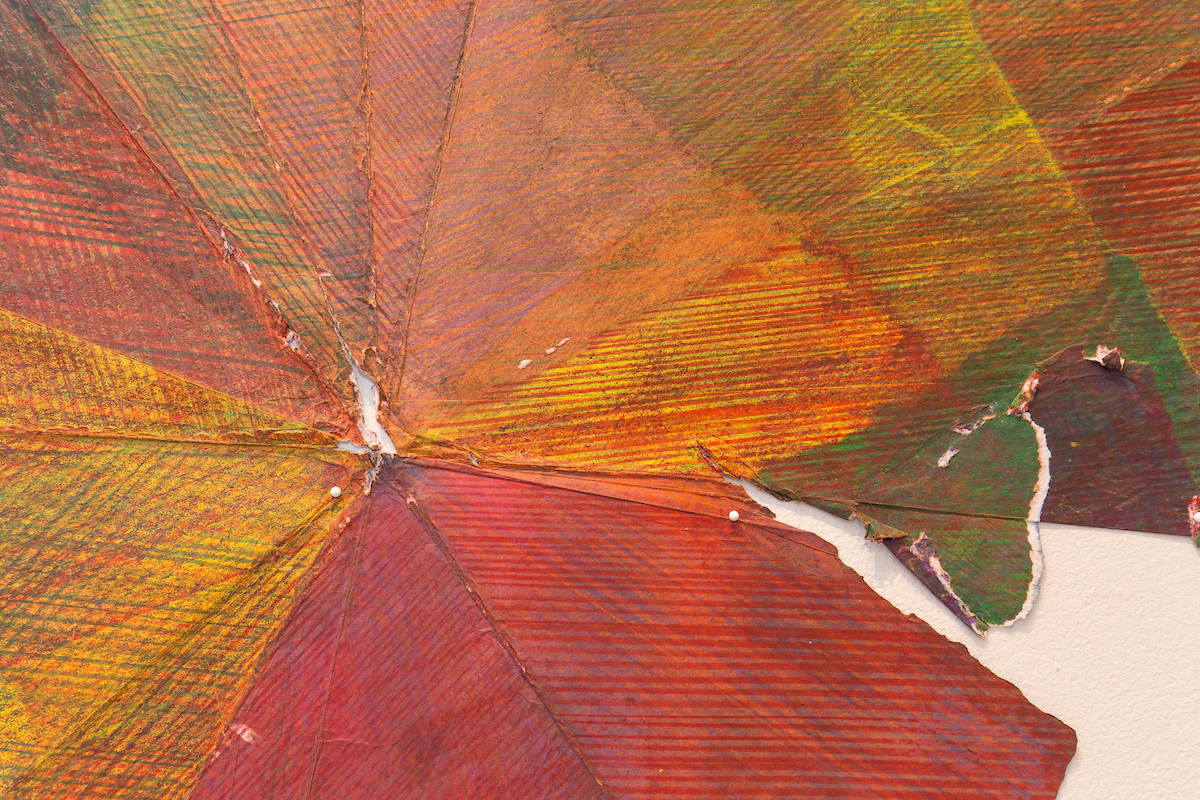folded works on paper and fabric, 2018-2020

This work treats color as mortar, as the skeleton instead of the make-up.
Color is folded in, like dry ingredients into wet: slowly, until the batter is smooth. Or until threads of pigment form nets to catch the light like a fly in a spiderweb. Color captivates; it takes captive. (What does it capture?)
Pigments mix to absorb more light with each layer: subtractive color.
In the studio, I ask: what is the opposite of a prism? The inverse of light?
Instead of splitting each hue from a white beam, stitch them back together with the force of a magnet or a black hole.
My hands weave color into the structure of the paper.
Each fold introduces a new hue in layered lines, embedding warp and weft.
Densely packed marks form a glossy veneer.
Creases appear through skeins of color. Veins pulsing under skin.
The pressure grows with each embedded layer, until it becomes too weighted with pigment.
Even as the vibrancy dulls, it oversaturates.
Eventually, this build-up reaches a breaking point. The surface tears, bleeding chroma.
What happens when the weight of color collapses in on itself?
What if the process that creates is the same one that destroys, and vice versa?